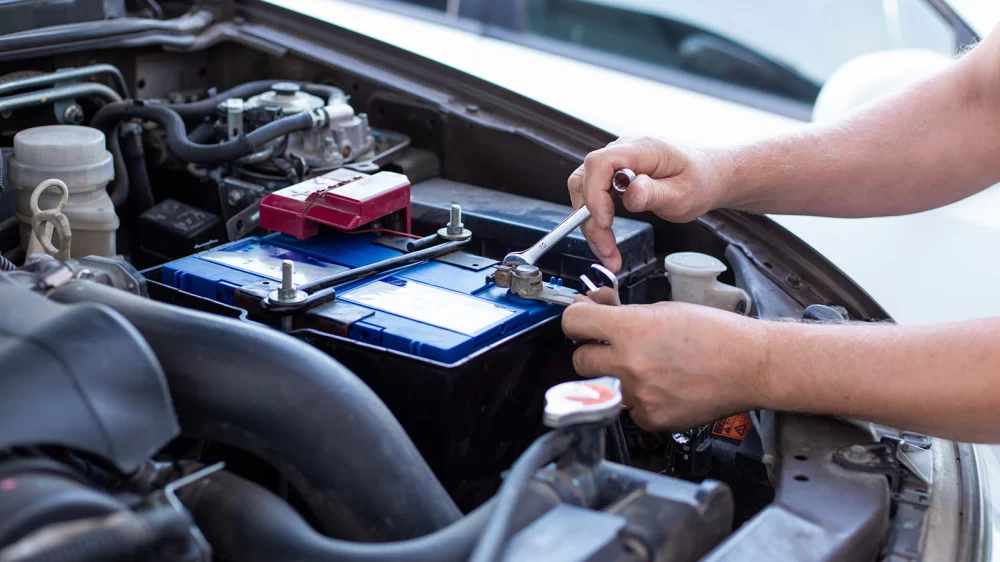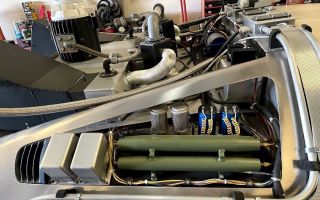How to Replace Your Car Battery When You Don’t Have Tools
Replacing a car battery can seem like a daunting task, especially when you don’t have the right tools on hand. But don’t worry, you don’t have to call a tow truck or spend a lot of money at a mechanic’s shop to get it done. With a bit of resourcefulness and determination, you can successfully replace your car battery yourself, even without specialized tools.
In this guide, I’ll take you step by step through the process of replacing your car battery, showing you that with the right approach, you can do it with minimal tools and still get the job done effectively. So let’s dive into it!

Pick Your Part - Help Yourself
1232 Blinn Ave, Wilmington, CA 90744, USA
Step 1: Prepare Your Space
The first thing I always do before working on my car is ensure that I have a safe and clean area to work in. You don’t need a fancy garage; a driveway or even a parking lot can work just fine. But make sure the car is in a stable position and won’t roll while you’re working on it. If the car is on an incline, I recommend using wheel chocks (or anything else sturdy, like a brick or block) to prevent movement.
Once the car is secure, make sure you have a flashlight or any form of light source because you don’t want to struggle seeing the components in the engine bay. It’s better to be prepared with adequate lighting before you start, especially if the replacement happens in a dimly lit area or evening hours.

Pick Your Part - Greer
13054 E Wade Hampton Blvd, Greer, SC 29651, USA
Step 2: Gather Your Materials
You’ll need a few basic items to replace the car battery. Ideally, you would have a set of wrenches or pliers, but if you don’t have them, don’t panic. Some common household items can come to the rescue. For example, I’ve successfully used a pair of sturdy kitchen scissors in place of a wrench to loosen the battery terminals. A pair of gloves can also come in handy to protect your hands from dirt or corrosive materials.
If your car battery is held down with a bracket, you’ll need something to loosen it—this could be a simple adjustable wrench or even a pair of channel lock pliers if you don’t have the exact size. Some people also use a flathead screwdriver to loosen the battery hold-down bracket, especially if the screws are not too tight.
Step 3: Safety First
Before you do anything with the battery, make sure the engine is off and that the keys are removed from the ignition. This is essential to prevent any electrical accidents. It’s also important to wear gloves if you can, especially if you suspect there might be corrosion on the battery terminals. Corrosion can be dangerous and harmful to your skin.
Next, disconnect the car battery. Always start by removing the negative terminal first, which is the black cable. You can usually identify it by the “-“ sign. Use your hand or makeshift tools to loosen the terminal clamp, and once it’s loose enough, gently pull the cable off the terminal. Afterward, disconnect the positive terminal, which is typically red and marked with a “+” sign. Be sure not to let the positive and negative cables touch each other while you’re working.
Step 4: Remove the Old Battery
Now that the cables are disconnected, it’s time to remove the old battery. The battery may be heavy, so I recommend having someone to help if possible. If you’re working alone, take extra caution and ensure you can lift the battery safely without straining your back.
Car batteries are often secured with a bracket or hold-down bar. If this is the case, use your makeshift tools, such as pliers or screwdrivers, to loosen the bolts or screws that are holding it in place. Once you’ve removed the bracket, you should be able to gently lift the battery out of the compartment. Remember, batteries are heavy, and you don’t want to drop them as this could cause damage or injury.
Step 5: Install the New Battery
With the old battery out of the way, it’s time to put in the new one. Start by lifting the new battery into the compartment carefully. Ensure that it fits snugly and securely in place. If the new battery is smaller than the old one, there might be some movement, but that’s okay as long as it’s not excessive. You can use any extra materials, such as foam or cloth, to prevent the battery from shifting around.
Next, secure the new battery by reattaching the hold-down bracket or securing bolts. Tighten them carefully to ensure the battery won’t move around. I like to check the battery’s position a couple of times before moving forward to make sure it’s completely stable.
Step 6: Reconnect the Battery Terminals
Now it’s time to reconnect the battery terminals. Start by attaching the positive cable to the positive terminal, then the negative cable to the negative terminal. Make sure both cables are tightened securely. You can use your hands or pliers to tighten them, but be careful not to overdo it. The cables should be firmly attached without being too tight.
Once the terminals are secured, check the battery again to make sure everything is in place and that the connections are clean and free of corrosion. If you notice any corrosion, use a mixture of baking soda and water to clean the terminals before reconnecting them.
Step 7: Test the New Battery
With everything reconnected, it’s time to test the new battery. Start your car and check to make sure the engine starts smoothly. If the car starts without any hesitation, you’ve done the job correctly. If you notice any issues, recheck the connections to make sure everything is secure and properly connected.
Additionally, if your car’s electrical systems (like the radio or lights) aren’t functioning properly, double-check that the battery is fully seated and the connections are good. Sometimes it takes a few moments for everything to reset after installing a new battery, so don’t panic if things don’t work right away.
Step 8: Dispose of the Old Battery Properly
Once the new battery is installed and the car is running, it’s time to dispose of the old battery. Do not throw it away in the trash. Car batteries contain hazardous materials and need to be recycled properly. Many auto parts stores offer battery recycling services, and some will even give you a discount on your new battery for turning in the old one. Make sure to find a proper recycling facility to dispose of it.
Replacing your car battery without the right tools can be challenging, but with a little ingenuity and preparation, it’s definitely possible. By following these steps, you can save yourself time and money while gaining a sense of accomplishment from doing it yourself. Remember to stay safe and take your time throughout the process.



























